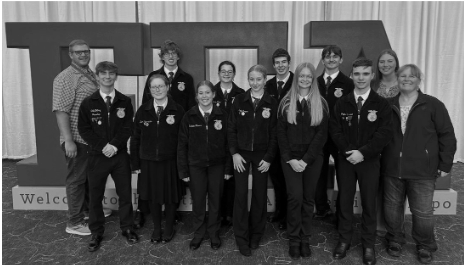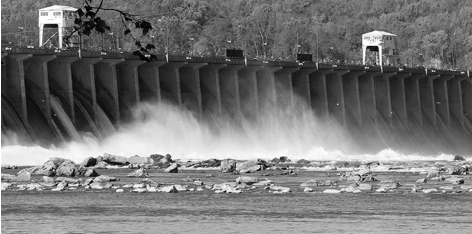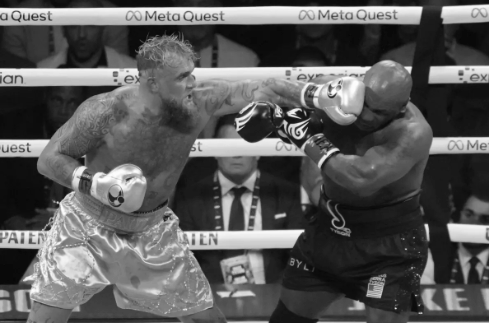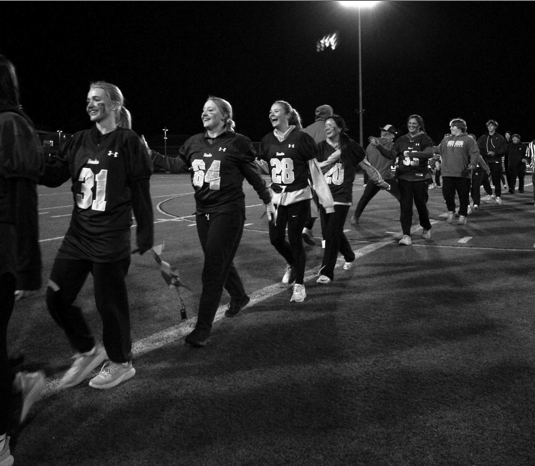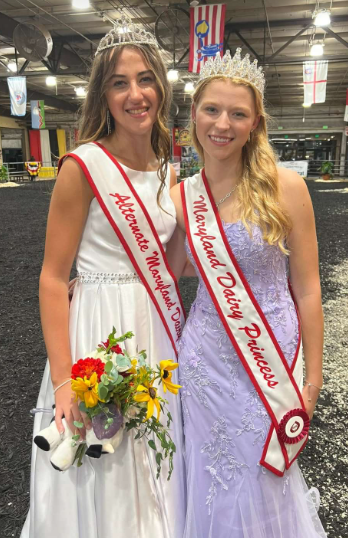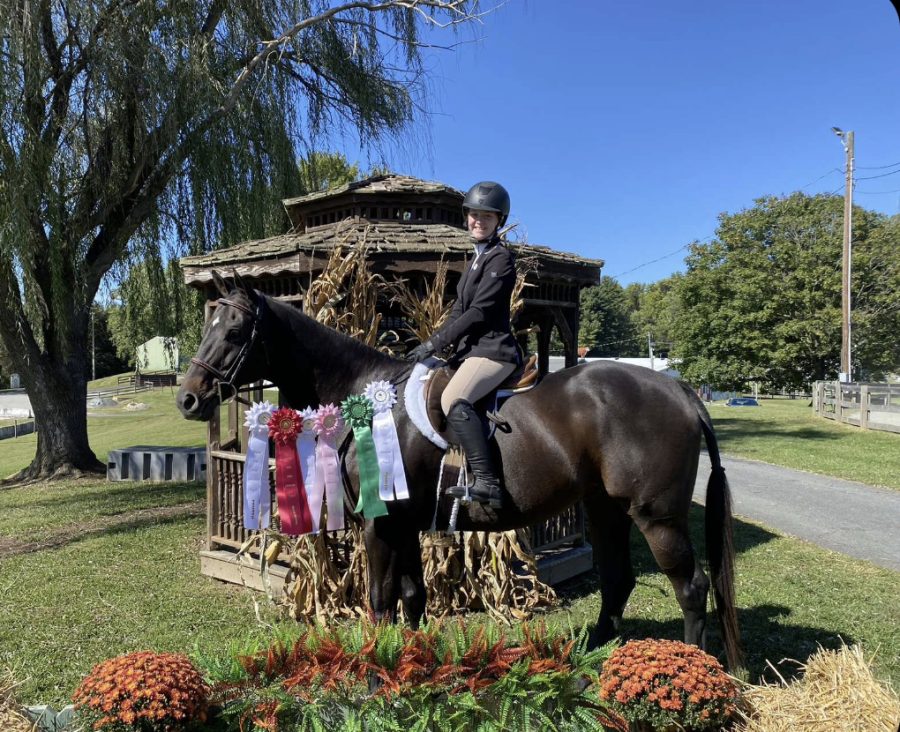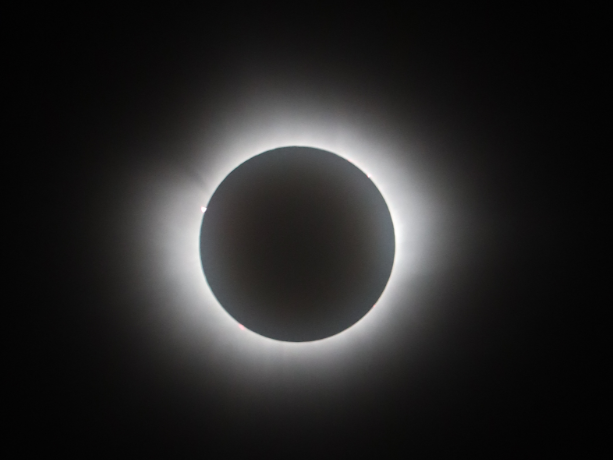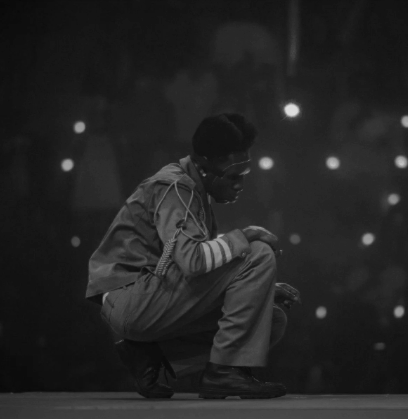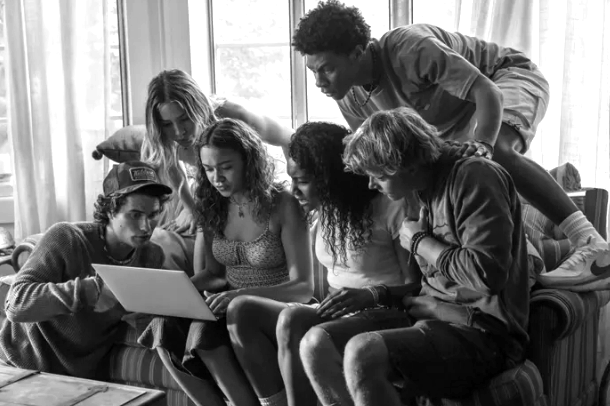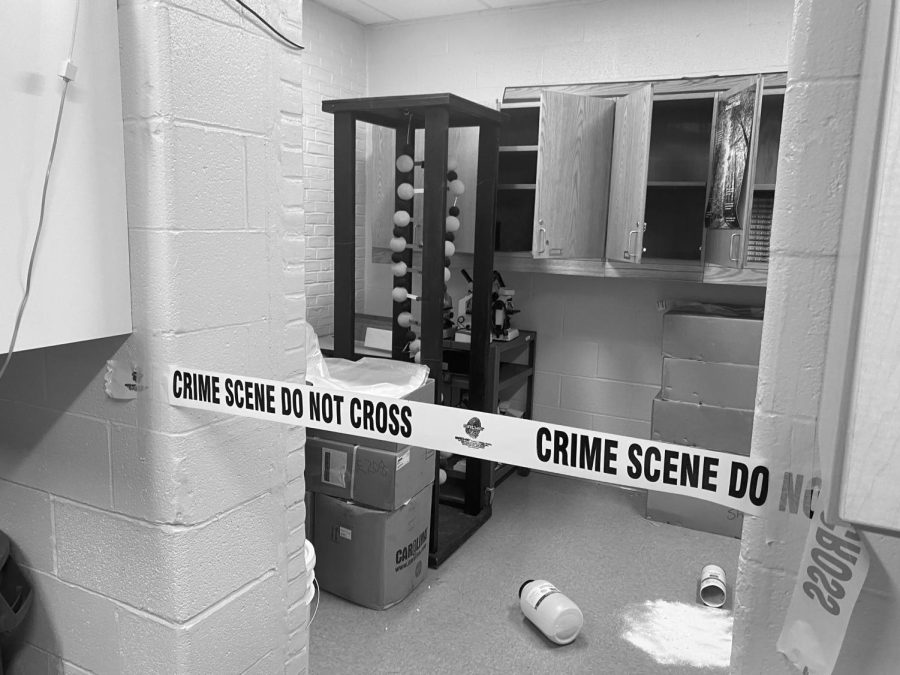Forensic scientists gets hands on training; Students apply skills interactively
Realistic crime scene created for student observation. Forensic science students continue to apply skills learned to solve a crime.
January 13, 2022
“I love teaching using hands-on activities like the burn test and the crime scene, that is why I chose to become a science teacher,” says forensic science teacher Kristian Jones-Knoll. She said “students benefit greatly from hands-on learning.” Students participated in a fiber burn test and are currently participating in an ongoing crime scene lab to gain hands-on experience.
Junior Finley Lavin states that interactive learning like these labs are more effective than watching a movie or reading a textbook, “the interactive [elements] help me remember it more, for me, sitting and watching a video is not as beneficial to me as labs like this are.” Senior AJ Turner agrees with Lavin and adds that these labs give them skills for the real world.He said, “we are starting with something “little” here but the skills we learn can be applied in the real world with big deal situations.”
For the burn test, students examined several different fiber samples and observed the way they were impacted when they were ignited. Observations includes if the fiber “melted, shriveled, or curled,” so that they could identify whether the fiber was man made or synthetic, according to Turner. “The burning fiber lab was really cool and fibers can burn in many different ways and I didn’t know that some of them could melt and I got to see something that I wouldn’t normally see,” says Turner.
“Something like the crime scene adds suspense and it builds up as the days go on, until finally, the students have all the “pieces of the puzzle” and are able to solve the crime,” said Jones-Knoll.“Students benefit greatly from labs like the burn test and the crime scene investigation, states Jones-Knoll. Lavin comments,“Talking to different teachers for the crime scene lab is really fun and I enjoy trying to figure out something we don’t have the answer to right away to study.”
Turner includes that while applying the skills he learned that he finds it difficult to collect evidence sometimes because the pressure not to mess it up is high. He said, “it is important in this field to not mess up evidence so we can get accurate results.” Lavin disagrees and adds that her struggle is with organizing the evidence that she collects, “My main struggle with the crime scene lab is keeping track of all of the photographic evidence because we are required to take a lot of photos- just like real forensic investigators do.”
Jones-Knoll explains that the majority of the hands-on lab activities only last one class or part of a class period, such as the burn test. Labs like the crime scene last over a couple days; Jones-Knoll states that there are benefits to both activities for different reasons. “The activities that I do for one class period, or a part of a class period help reinforce the concepts that I just taught. The crime scene incorporates concepts we have learned over a long period of time and puts them all together.”
